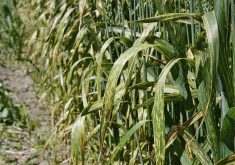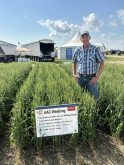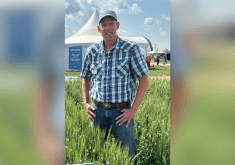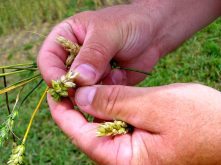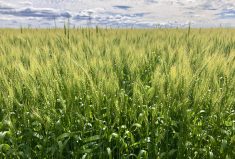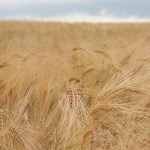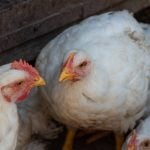The forecast is for more fusarium — and possibly a lot more if it’s another wet year.

“As you know, the severity and incidence of fusarium is actually on the rise — if we continue to get the weather that we’re getting, we can expect the same,” Agriculture Canada research scientist Brian Beres said during a session at FarmTech.
Fusarium is well established in the Irrigation Belt in the province’s south and becoming more prevalent in the area around Oyen.
“For the most part, you’ll get fusarium in one of two ways,” said Beres, who works at Ag Canada’s Lethbridge research station. “It’s colonized on the crop debris, so it’s sitting in the crop, or it’s sitting on the soil surface, and then by rain events or irrigation, it (the spores) start getting splashed up and the spores release.”
Read Also

Hail research hopes to benefit potato growers
Alberta research scientist measures hail storm and heat dome affects on potato crops
Because breeders are developing shorter varieties of cereal crops, it “doesn’t take much” for the spores to splash up into the head of the crop and infest it.
- Read more: Don’t delay if you haven’t lined up seed
- Read more: Battling fusarium requires new initiatives
“Once it gets into the head, you’re in big trouble,” he said.
One way to mitigate the risk is to plant winter wheat which disrupts the fusarium life cycle because it matures so much earlier.
“It’s not a magic bullet, but it’s one thing that can help you in your defence,” said Beres. “If things are getting bad on your farm and you’re not doing winter wheat, you might want to do a rethink because it’s one of the few classes that also has a resistant variety.”
Some varieties in Canadian Western Red Spring and Canadian Prairie Spring have resistance and while some CPS varieties are improving on this score, durum is highly susceptible.
“If you’re flexible with your market class, things like winter wheat and CPS are probably the way to go,” said Beres.
“If you like Grade 1 and you’re experiencing fusarium, you’re not going to get it with CWRS… You’re going to make a lot more money with winter wheat.”
Only about one million acres of winter wheat are grown in Western Canada, something Beres called “a little mind boggling.”
“I think there’s a market out there. I think there’s a chance to manage some of the issues that we have on farm with disease. But it’s a mindset and that mindset is pretty tough to break.”
Another defence is not to delay seeding dates. When the temperature in the top inch of soil is about 2 C, spring wheat can be planted as long as growers use dual fungicide and insecticide.
“With winter wheat or spring wheat, if you go in early, the flowering period will not be at the same time as the major spores of fusarium head blight,” said Beres.
Seed treatments can be useful for combating fusarium when growers are not sure that they have a clean seed lot. Using a good seed treatment can reduce the number of fusarium-damaged kernels. As well, higher seeding rates can add to uniformity in the field, which can help the crop fight off both disease and weeds.
Fungicides can help control fusarium, but they aren’t a silver bullet.
“Relying solely on fungicide is not going to give you the results you (might expect),” he said.
Fungicide is only effective if it drenches the head of the plant, and its efficacy is affected by sprayer or applicator speed, boom height, nozzle angle, and application timing.




